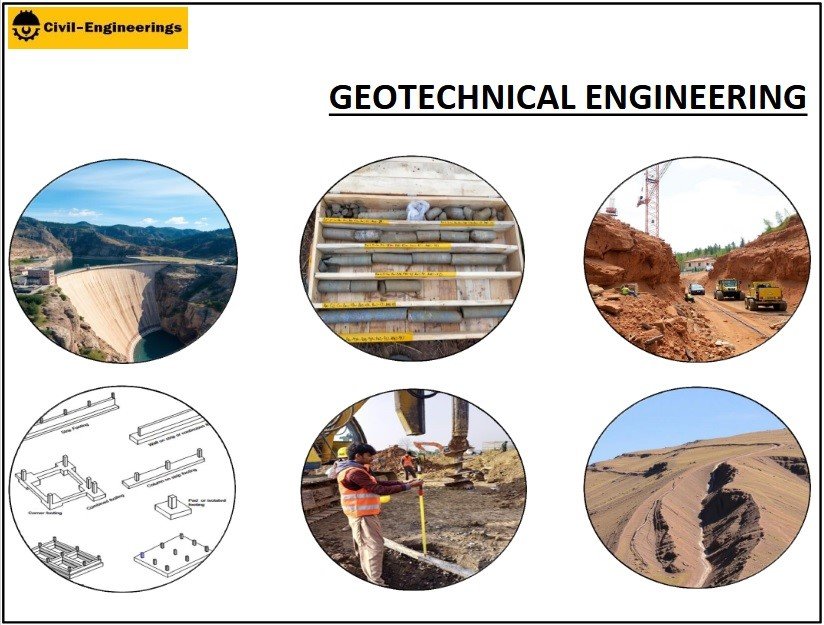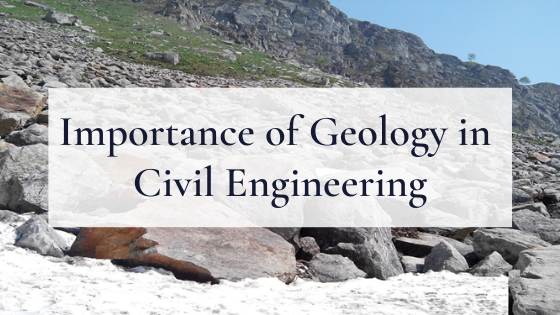Not known Facts About Geotechnical Engineering For Construction Projects
The Basic Principles Of Geotechnical Engineering For Construction Projects
Table of ContentsThe Single Strategy To Use For Geotechnical Engineering For Construction ProjectsThe Greatest Guide To Geotechnical Engineering For Construction ProjectsAn Unbiased View of Geotechnical Engineering For Construction ProjectsThe Only Guide for Geotechnical Engineering For Construction ProjectsGeotechnical Engineering For Construction Projects Fundamentals ExplainedThe Main Principles Of Geotechnical Engineering For Construction Projects All about Geotechnical Engineering For Construction Projects
and Kovacs, W. (1981 ), An Introduction to Geotechnical Engineering, Prentice-Hall, Inc. Deep Check Tech (2023 ): Deep Check Tech reveals concealed frameworks at the site of Denmark's tallest building. "Geofrost Coring". GEOFROST. Recovered 20 November 2020. Han, Jie (2015 ). Concepts and Technique of Ground Improvement. Wiley. ISBN 9781118421307. RAJU, V. R.Ground Enhancement Technologies and Instance Histories. Singapore: Research Study Publishing Services. p. 809. ISBN978-981-08-3124-0. Ground Improvement Concepts And Applications In Asia. Pariseau, William G. (2011 ). Design analysis in rock mechanics. CRC Press. Hegde, A.M. and Palsule P (Geotechnical Engineering for Construction Projects).S. (2020 ), Performance of Geosynthetics Reinforced Subgrade Subjected to Repeated Vehicle Loads: Experimental and Mathematical Researches.
Cengage Understanding, Stamford, 666 p. Atkinson, J., 2007. The auto mechanics of soils and structures. Taylor & Francis, N.Y., 442 p. Drifting Offshore Wind Generators: Reactions in a Sea state Pareto Optimal Layouts and Economic Evaluation, P. Sclavounos et al., October 2007. Nicholson, D, Tse, C and Penny, C. (1999 ). The Observational Method in ground engineering principles and applications.
Examine This Report on Geotechnical Engineering For Construction Projects
Research laboratory and area testing plays a critical function in this process. By removing samples from the earth's subsurface and using a suite of tests, geotechnical engineers can forecast the behaviour of soil layers and examine their viability for various building and construction endeavours. The essence of geotechnical design in civil engineering can not be overemphasized, attributable to a number of factors: The first action in any type of geotechnical study includes determining the soil type at the construction website.
Comprehending these characteristics makes certain that just suitable soil kinds are selected for the advancement, therefore avoiding potential architectural failings. The foundation acts as the bedrock of any building job. Selecting the appropriate foundation type is a choice that depends upon the extensive evaluation given by geotechnical design. This makes sure the longevity and stability of frameworks by suiting the tons they will certainly birth.

Geotechnical site investigation is a crucial action in the preparation and execution of any construction job. It involves the collection and evaluation of information connected to the physical buildings of soil and rock below a suggested construction site. This info is crucial for the layout and building and construction of risk-free, secure, and sustainable structures.
Some Ideas on Geotechnical Engineering For Construction Projects You Need To Know
, additionally known as subsurface expedition, includes a series of tasks aimed at identifying the dirt, rock, and groundwater conditions at a building website. The main purposes are to identify potential geotechnical threats, assess the engineering properties of subsurface products, and give referrals for the style and construction of structures, maintaining wall surfaces, and other structures.
The workdesk research helps in determining potential geotechnical problems and preparing the subsequent fieldwork. This involves observing the topography, drainage patterns, existing structures, plants, and any kind of indications of instability or disintegration.
The Ultimate Guide To Geotechnical Engineering For Construction Projects
Superficial examination pits are excavated to directly observe and example the soil and rock. This approach serves for examining the top layers of the subsurface and determining near-surface hazards. Non-invasive geophysical approaches, such as seismic refraction, ground-penetrating radar (GPR), and electrical resistivity tomography (ERT), are utilized to map subsurface conditions and spot anomalies.
Dirt and rock examples gathered throughout the area examination are subjected to laboratory testing to identify their physical and mechanical residential or commercial properties. These tests supply vital data for geotechnical evaluation and design.
The main advantage of geotechnical site examination is making certain the safety and security and stability of structures. By recognizing the subsurface problems, engineers can create foundations and various other structural components that can withstand the lots and environmental pressures they will undergo. This lessens the danger of settlement, decrease, and structural failing.
The Only Guide to Geotechnical Engineering For Construction Projects
As an example, comprehending dirt features can lead the choice of excavation methods, dewatering techniques, and ground improvement procedures. This makes certain reliable and risk-free building and construction methods. Geotechnical website examinations are frequently required by developing codes and policies. Abiding by these requirements makes sure conformity with lawful and safety and security criteria, preventing prospective lawful liabilities and task hold-ups.
This information is vital for project managers, engineers, and professionals in developing reasonable best site timetables, spending plans, and backup plans. Geotechnical Engineering for Construction Projects. High-Rise Structure in a Coastal AreaIn a coastal city, a skyscraper domestic structure was intended on a site with thought loose sand down payments and a high water table. A thorough geotechnical examination, including borehole drilling, CPT, and geophysical studies, was carried out
Geotechnical Engineering For Construction Projects Things To Know Before You Get This
Based on these searchings for, the structure style was customized to include deep stack structures expanding you can check here right into stable strata, and ground renovation techniques, such as vibro-compaction, were executed to mitigate liquefaction dangers. This aggressive approach guaranteed the safety and security and security of the structure while avoiding expensive post-construction remediation. Framework Advancement on a Sloping TerrainA major infrastructure project, including the building of a highway and bridges, was intended on a sloping terrain with high slopes.

The Leaning Tower of Pisa (Italy), a legendary architectural wonder, is well known for its unexpected tilt from substantial geotechnical problems. The tower's structure was inadequately designed to handle the soft, unpredictable soil below it, causing irregular settlement and its distinct lean. Our globe is dotted with excellent framework projectsfrom towering skyscrapers to sprawling bridgesall standing testament to the development of the different building equipment and approaches available.
Geotechnical design is a specific area within civil design that concentrates on examining the habits of planet products. This branch delves deep right into the groundinvestigating exactly how the soil, rock, and groundwater at a building website can influenceand be influenced bythe infrastructure that we put up on and right into them. Prior to a single brick is laid or a concrete foundation poured, geotechnical engineers probe into the earthgathering vital data about the website's soil structure, rock framework, and groundwater levels.
The Geotechnical Engineering For Construction Projects Ideas

is a tool used to examine the integrity and load-bearing capability of stacks throughout installment, leveraging the principle of wave breeding. It optimizes building and construction effectiveness by offering real-time evaluations, thus guaranteeing safe these details and effective heap foundations. One of the practical applications of geotechnical design includes making a decision and executing the best methods for structure building.
Load driving represents even more than the plain act of placing structural aspects right into the ground. As a matter of fact, it is a very carefully coordinated process of moving a structure's load past the much less steady dirt layers closer to the surfacedown to the much more considerable strata that exist underneath. In the situation of stack driving, take into consideration exactly how geotechnical engineers expertly utilize this method to evenly disperse the framework's weight.